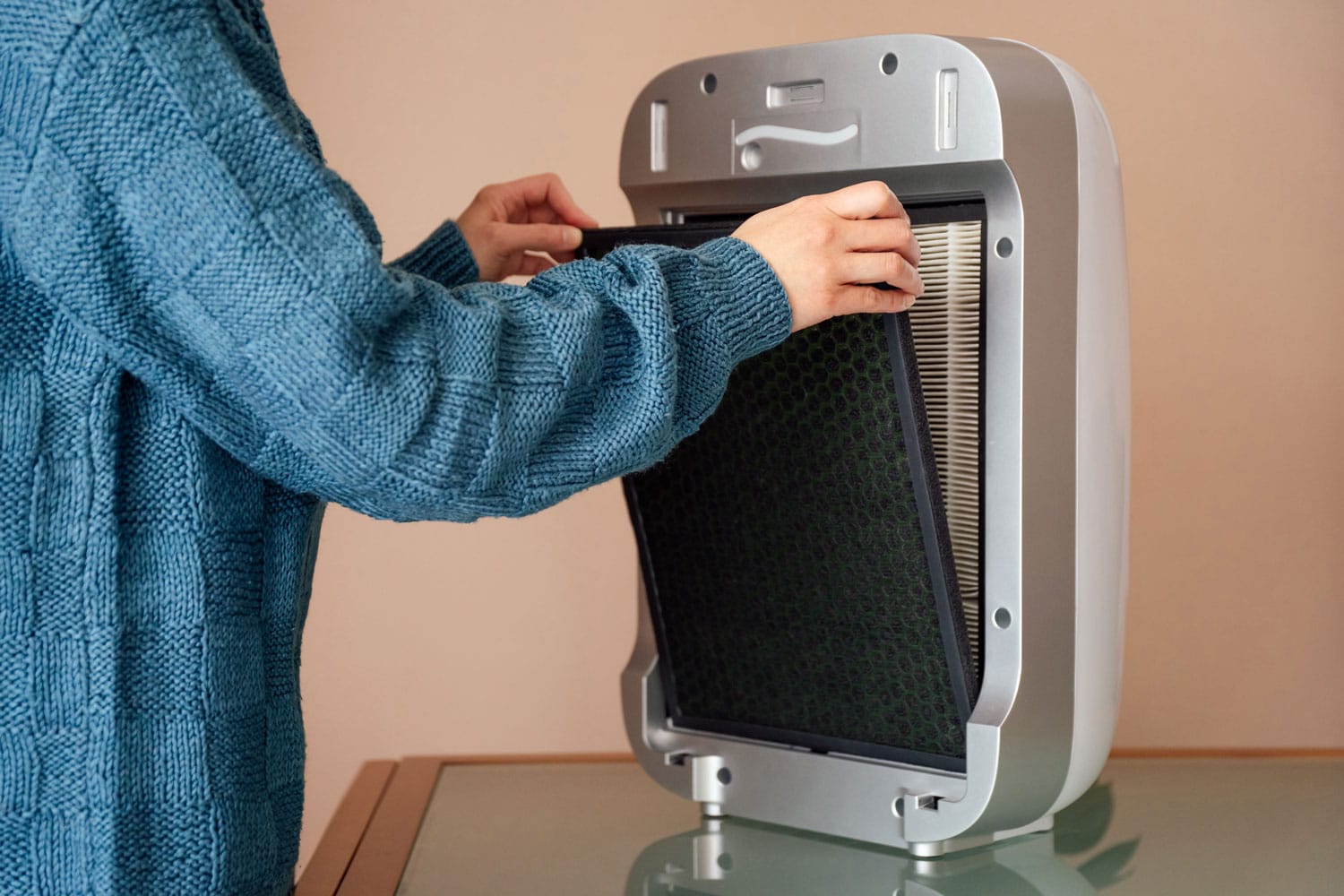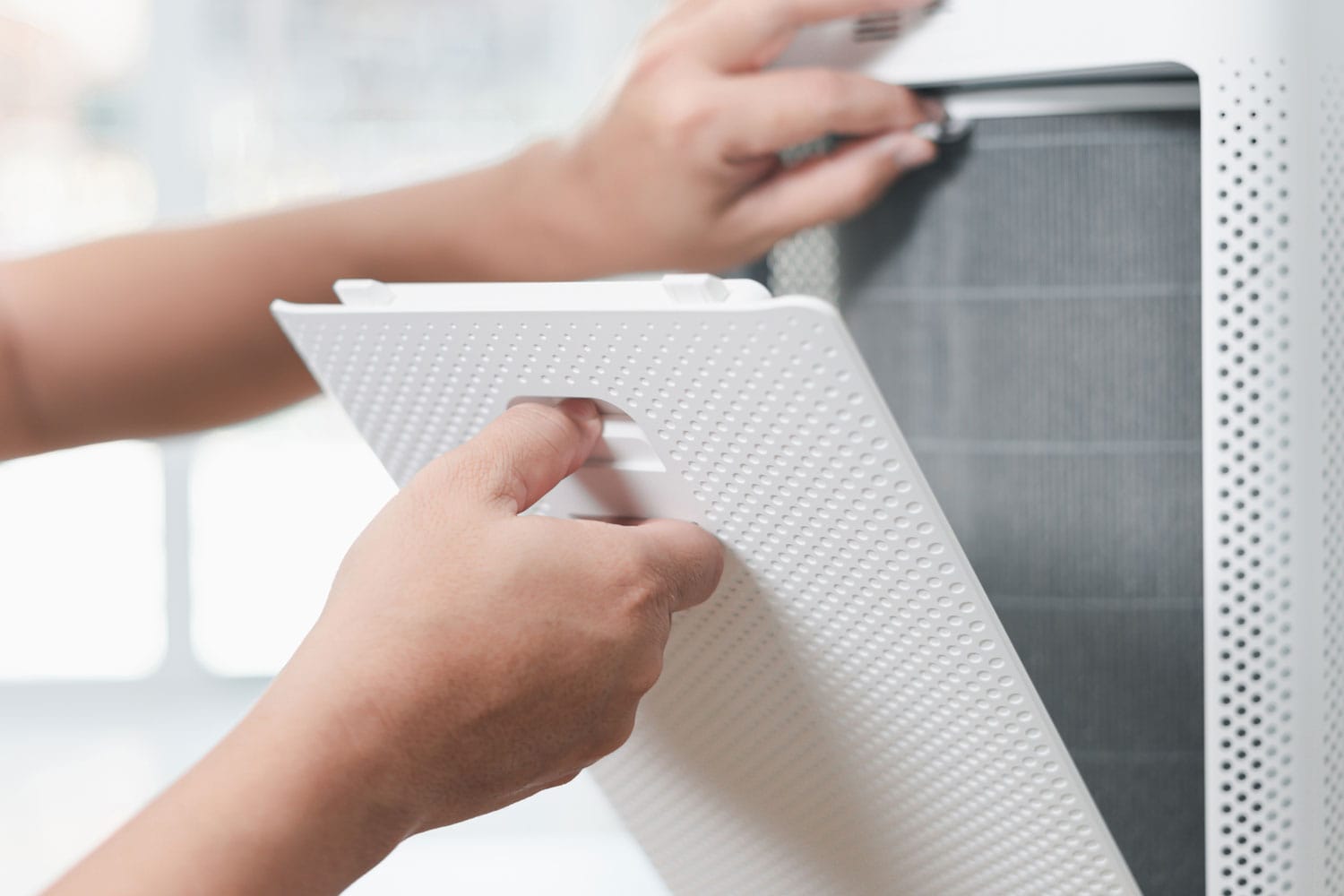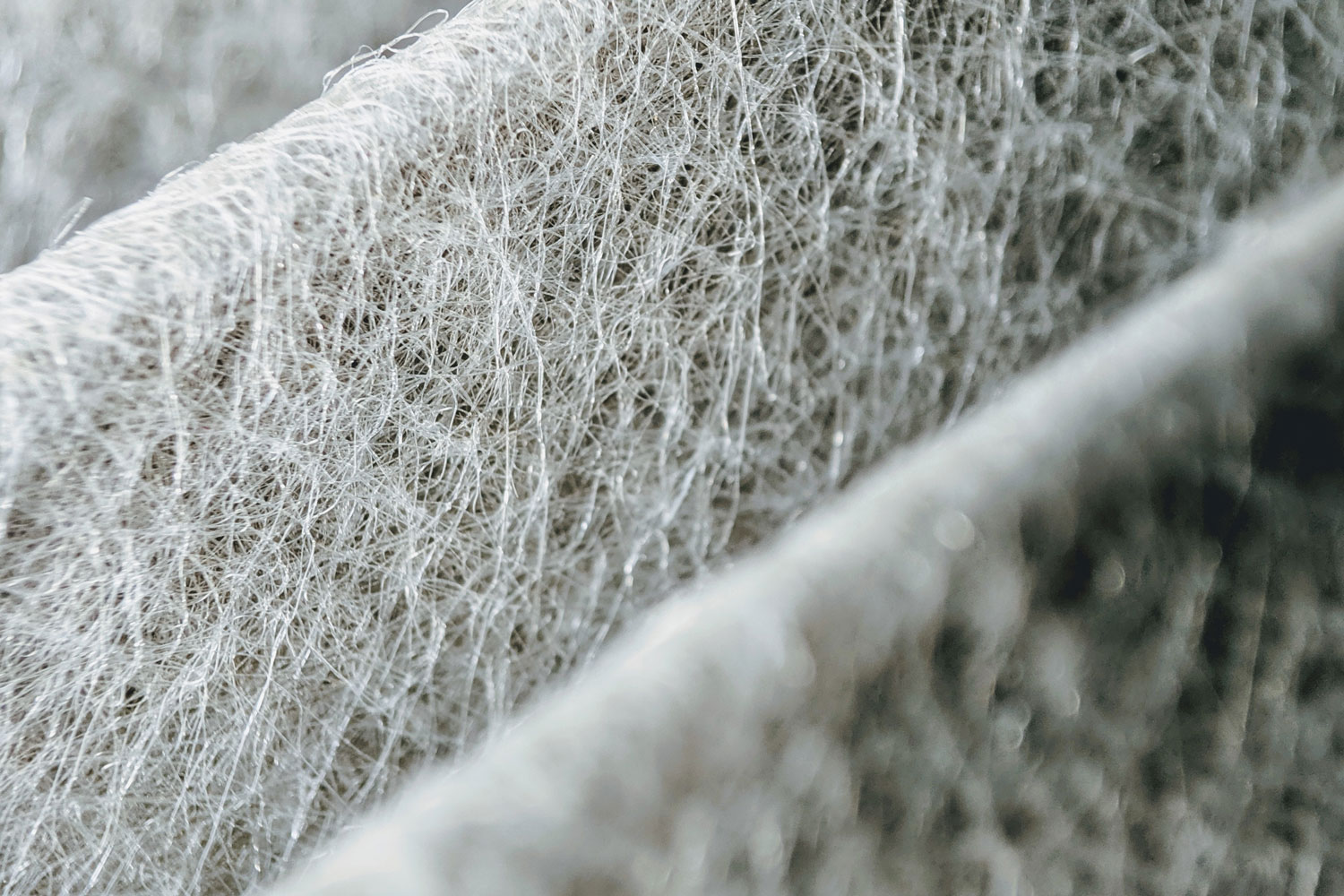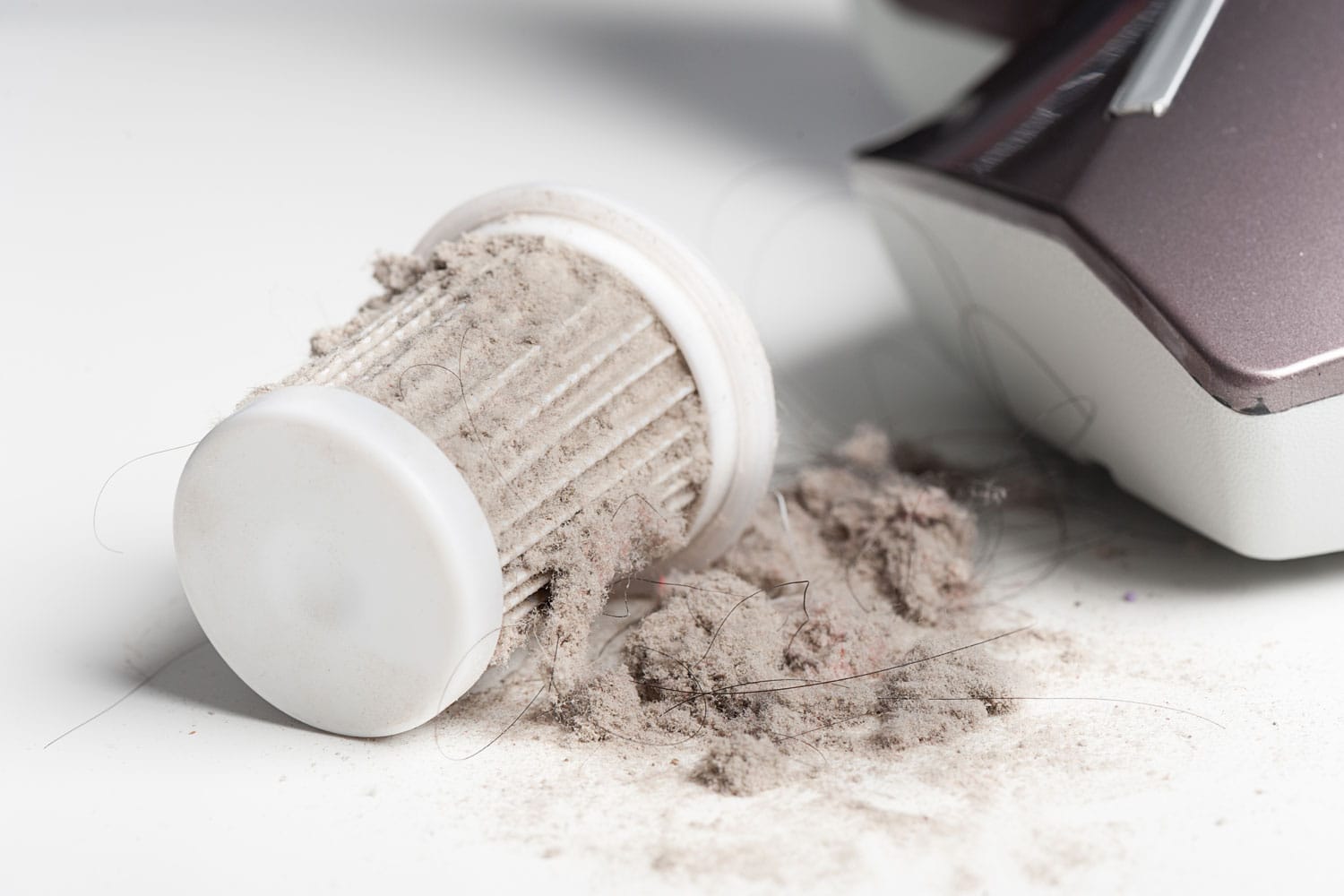HEPA filters are indeed beneficial to our health. It is why we seek the answer if we can wash and reuse it. And this post will tell you the answer you are looking for. We have thoroughly sifted answers from the internet to share with you.
The answer to your question is both yes and no. The usability and washability will depend on the HEPA filter's features. Some manufacturers produce HEPA filters that you can only use once, and some make them washable and reusable.
To know more about HEPA filters, we suggest you keep reading. There are a lot of things we want to share with you. And you must know your HEPA filters better to be able to make the most out of them.

Are HEPA Filters Washable And Reusable?
You can clean and reuse a permanent HEPA filter. However, you must do it as carefully as possible to avoid damaging it. You can clean most HEPA filters using a vacuum cleaner, but that will require utmost gentleness. On the other hand, you can rinse a washable HEPA filter with cold water.

It is worth noting that there are no clear definitions or guidelines for what constitutes a permanent or washable type of HEPA filter. So, we suggest that you look for the 'washable' or 'permanent' label on the website or air purifiers packaging box if you are unsure about it.
How To Clean A HEPA Filter Without Ruining It
Cleaning a HEPA filter using the brush attachment of a vacuum cleaner is the most common method. You must set the vacuum cleaner's speed to the lowest to use this technique. Vacuum the surface dust, debris, pet hair, and mites without putting pressure on the filter or as gently as possible.
Another cleaning procedure is to wash the HEPA filter with cold water. This method will help you remove all the stuck particles from your filter. Once you finish cleaning it, let the filter dry thoroughly before putting it back on the device. Letting it dry usually takes an entire day. However, if you want to reduce its drying time, you can try to shake the filter off a little to remove some of the water from it.
At best, follow the manufacturer's instructions for cleaning the HEPA filter, including any additional instructions. But if you can't find anything from the packaging box, you should discard and replace a True HEPA filter rather than cleaning it.
While you are at it, do not forget to:
- Use a facemask to reduce the chances of breathing the escaping air contaminants.
- Cleaning the filter outdoors would be best to prevent all the airborne contaminants from coming back into your home.
Check out this LEVOIT air purifier with a True HEPA filter on Amazon.
What Are The Risk Of Cleaning A HEPA Filter

Most HEPA filters are not washable for various reasons, including the fact that improper cleaning can be harmful. You should check into some things before you start to assist you in understanding the risk.
1. Habitually washing HEPA filter
Habitually washing the HEPA filter will damage the filter's fiber density. And if it does, expect that it will reduce its efficiency in catching all the microscopic particles. And even if you clean it with the utmost care and gentleness, the HEPA filter may not operate as well as before cleaning because it may have degraded its quality.
2. Pollutants will escape from the filter
When cleaning a HEPA filter, the dust, debris, or other pollutants will inevitably escape from the filter. Doing so is not only inconvenient and potentially harmful, but you will have to perform it every couple of weeks to stop all the pollutants and particles from clogging your filter. In comparison, a disposable HEPA filter will only need to be replaced every year or so.
3. Damp HEPA filter
You should thoroughly dry the filter because letting it damp will enable the growth and spread of microorganisms and bacteria on the filter. Most HEPA filters will take 24 hours to completely dry. In addition, you must not use a hairdryer to speed up the drying process because the heat from the hairdryer will damage the fiber of the HEPA filter. And it will result in not filtering the indoor air for the duration of the drying process.
4. Health risks
When cleaning the filter, you will expose yourself to dust mites, pet dander, pollen, mold, and other pollutants. And there is a huge possibility of you inhaling the allergens, which could trigger allergic reactions.
You will know it did when you are experiencing sinus, cough, sore throat, red eyes, and many more. Plus, it could eventually lead to respiratory problems such as bronchitis, asthma attacks, and COPD.
5. Transferring the pollutants from one filter to another
You are just transferring the grime from one filter to the next. For instance, vacuuming the filter will transfer and trap the HEPA filter's particulates into the filter of the canister vacuum cleaner. And finally, you will have to discard the filter when it is no longer practical or useful.
Read more about: "How To Clean Dyson Air Purifier Filter."
How Effective Are Washable HEPA Filters?
Washable HEPA filters can reduce up to 99.97% of dust, pollen, mold, and other airborne pollutants. And that is how effective it is. However, washable HEPA filters may reduce their efficiency the more you clean, wash, and reuse them. Check if the HEPA filter is damaged once you notice that the indoor air is not the same as before. Replace the filter if necessary.
How Will I Know If The HEPA Filter Is Dirty?

It will be too easy for you to determine if the HEPA filter of your air purifier is already dirty; when you notice that the device is struggling to catch all the air particulates in the air. A dirty HEPA filter has debris, dust, or hair that you can immediately notice just by looking at it.
And with this instance, you can replace or clean it if it is washable. Moreover, you should be aware that a yellowish filter indicates oxidation and not dirtiness. Alternatively, you can go with the best filterless air purifier to eliminate the headache of maintenance.
What Are The Components Of A HEPA Filter?
A HEPA filter consists of a range of materials, such as:
- plastic polypropylene (PP)
- polyethylene terephthalate (PET)
- metals
- wools
- foils,
- vegetable fibers
- nylon
- fine glass fibers
Filter glass threads tangle and compress in various directions to generate a filter mat with a diameter of less than one micron. The filter's efficiency and exterior part improved by using many folded sheets of fibrous material.
A standard HEPA filter has roughly 2,500 layers of interlaced glass threads to catch minuscule particles such as pollen, mold, PM2.5, germs, and, most significantly, viruses.
How Does HEPA Filter Work?

A HEPA filter in an air purifier captures all the passing airborne pollution and releases purified and fresh air out. And due to the HEPA filter's narrow opening, all the harmful particulates that pass through it will remain on the fiber in either:
- Direct impaction
- Sieving
- Diffusion
- Interception
Direct impaction happens when particles go straight, collide, and remain on the fiber.
On the other hand, Sieving occurs when the particles are big enough to pass through the gaps and get caught by encircling fibers.
Diffusion occurs when extremely fine particles crash with fiber, go in volatilely and are attached to it.
Lastly, an interception occurs when the airflow delivers the particles around the fibers. However, they will eventually adhere to the sidewalls of the fibers.
A pre-filter typically comes with the HEPA filter that catches massive particles such as dust and an activated carbon filter that eliminates smoke, chemical vapors, and smells.
Wrap It All Up

This article tells you that you can wash, clean, and reuse HEPA filters. However, if you were to ask us, we don't recommend the washing and reusing method. Cleaning and reusing it will depend on how many risks you are willing to accept.
If you prefer using the utmost efficient HEPA filter, we suggest going with the old way of 'using and replacing' filters. Alternatively, you can wash and reuse them if you are willing to risk air pollution and the lower effectiveness of the filter.
We hope this post helped you in your current issue. And if you want more, you can check these out!
How To Reset A Dyson Air Purifier [Inc. Without A Remote]
Can You Install A Window Air Conditioner Through A Wall [And How To]?

